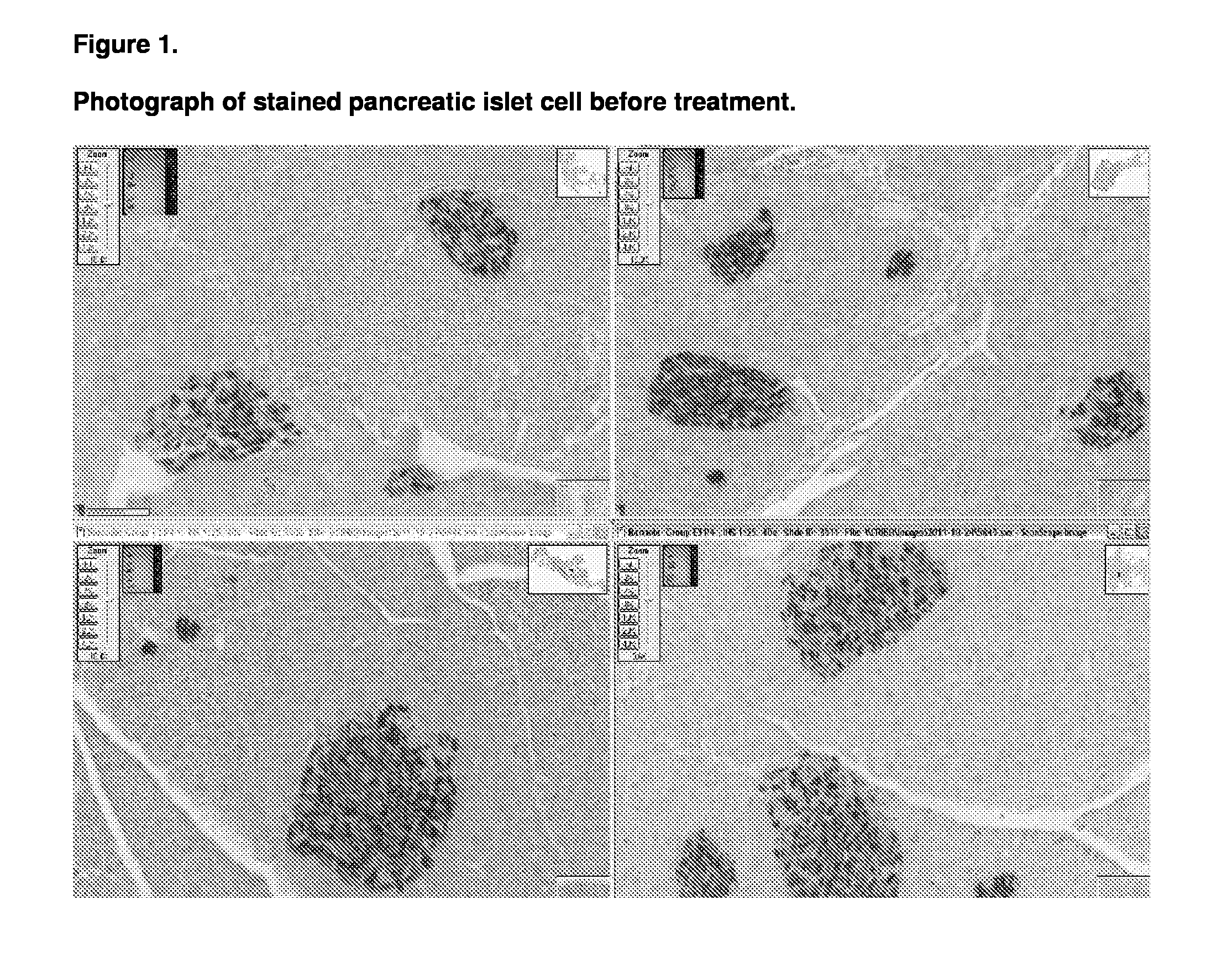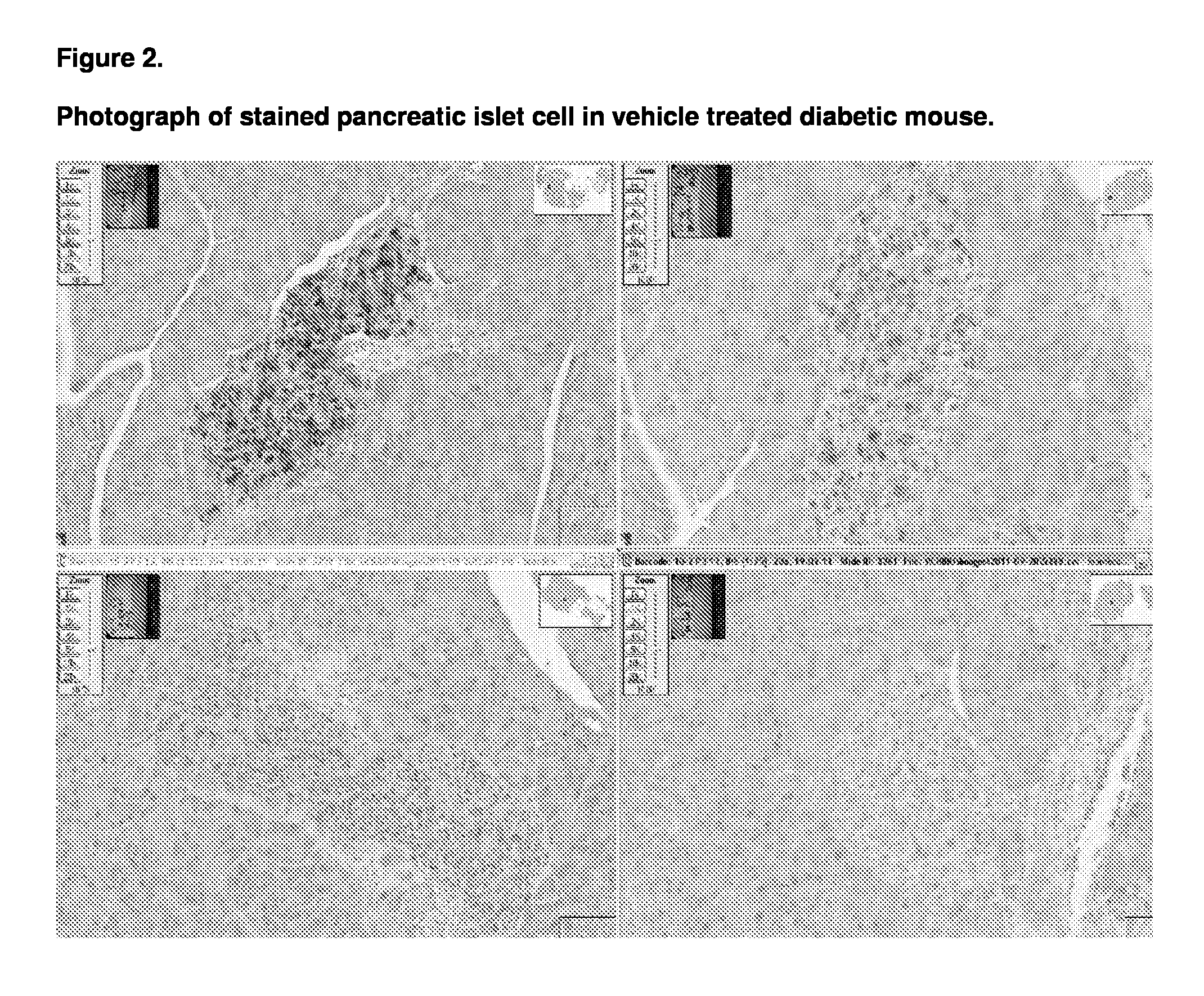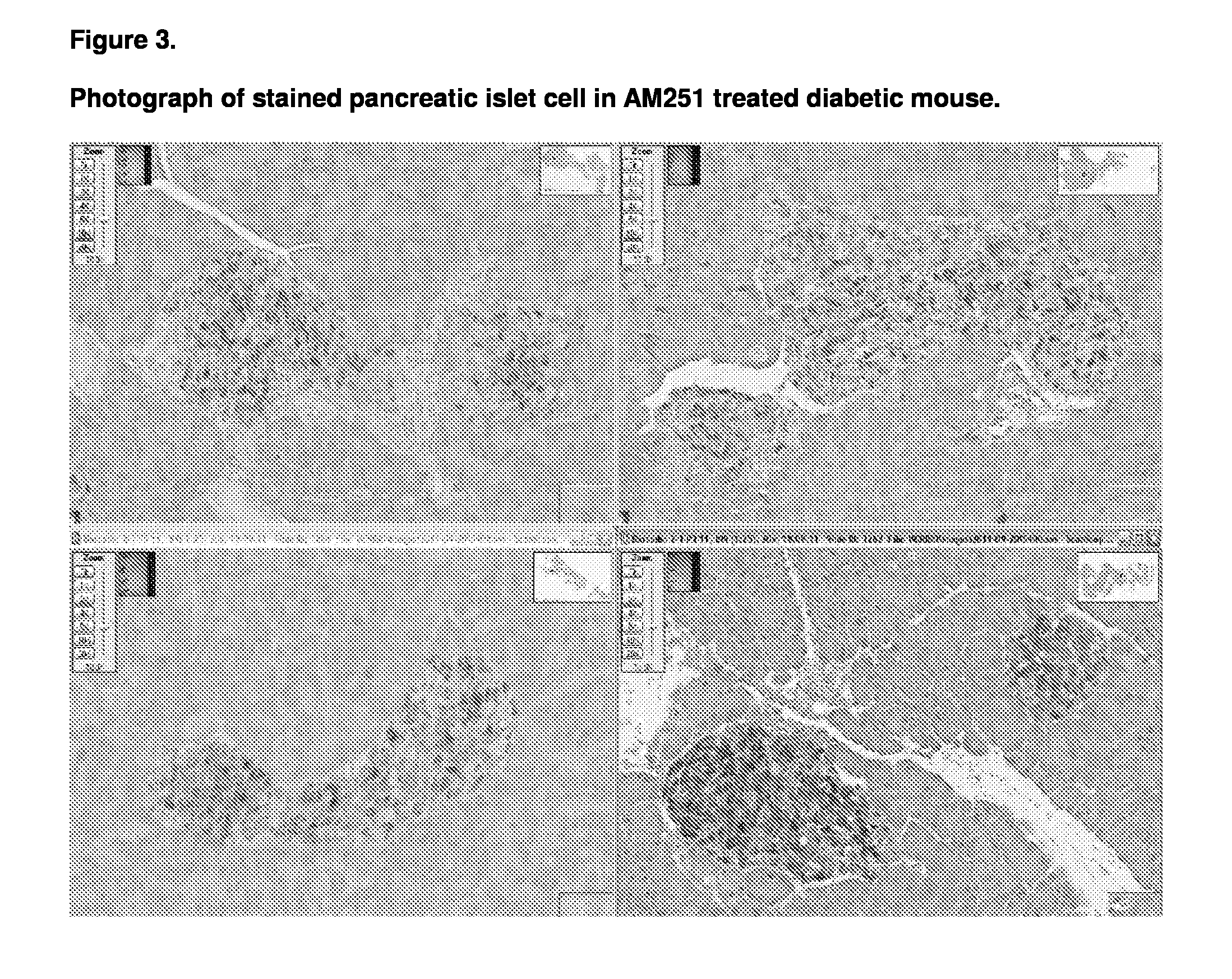Tetrahydrocannabivarin (THCV) for use in the protection of pancreatic islet cells
- Summary
- Abstract
- Description
- Claims
- Application Information
AI Technical Summary
Benefits of technology
Problems solved by technology
Method used
Image
Examples
example 1
Effect of Tetrahydrocannabivarin (THCV) and Cannabidiol (CBD) on Islet Cell Morphology and Function in Diabetic Mice
Materials and Methods
[0123]The animals used in this study were male db / db mice which were aged 7 to 8 weeks on commencement of the study. The db / db mouse is a model of obesity, diabetes, and dyslipidemia. The mice were obtained from Charles River (Italy) and fed on the Beekay Rat and Mouse Diet Number 1 throughout the study.
[0124]The animals were weighed and grouped into 8 animals per group, 4 animals per cage and dosed as described in Table 1.3 below:
TABLE 1.3Dosing GroupsGROUPDoseA10 ml / kg VehicleB10 mg / kg THCVC10 mg / kg AM 251D10 mg / kg CBDEBaseline measurements
[0125]The phytocannabinoids CBD (10 mg / kg) and THCV (10mg / kg) were tested along with AM 251 (10 mg / kg) which was used as a positive control.
[0126]At the start of the study the Group E animals were sacrificed and a terminal blood sample was taken. In addition four of the animals pancreases were sampled for dete...
example 2
Effect of Tetrahudrocannabivarin (THCV) and Rosiglitazone on Plasma Glucose Levels in Diabetic Mice
Materials and Methods
[0139]The animals used in this study were male db / db mice which were aged 7 to 8 weeks on commencement of the study. The db / db mouse is a model of obesity, diabetes, and dyslipidemia. The mice were obtained from Charles River (Italy) and fed on the Beekay Rat and Mouse Diet Number 1 throughout the study.
[0140]The animals were weighed and grouped into 8 animals per group, 4 animals per cage and dosed as described in Table 1.4 below:
TABLE 1.4Dosing GroupsGROUPDoseA10 ml / kg VehicleB10 mg / kg THCVC10 mg / kg RosiglitazoneD10 mg / kg SitagliptinE10 mg / kg THCV + 10 mg / kg Rosiglitazone
[0141]Sitagliptin is an anti-diabetic drug and was used as a positive control.
[0142]On day 1 dosing commenced for groups A to E as outlined in Table 1.4 above. Animals were dosed daily at 17:00.
[0143]At set time periods: day 0, day 7, day 14, and day 23, throughout the study the animals in each ...
example 3
A Randomised, Double Blind, Placebo Controlled, Parallel Group, Pilot Study of 1:1 and 20:1 Ratio of Formulated CBD:THCV Plus CBD and THCV Alone in the Treatment of Dyslipdaemia in Subjects with Type 2 Diabetes
[0147]The aim of the pilot study was to evaluate the treatment of dyslipidaemia in subjects with Type 2 diabetes who have failed to achieve satisfactory lipid control with existing treatments.
Materials and Methods
[0148]There were four arms in this study plus a placebo comparator. These were a 1:1 and 20:1 ratio of CBD:THCV, CBD alone and THCV alone. Assessment of the impact of each treatment on different parameters was made. Measurements were taken of high density lipoprotein (HDL) cholesterol, total cholesterol, low density lipoprotein (LDL) cholesterol, HDL / LDL ratio, serum triglycerides, apolipoprotein markers (Apo A & Apo B) and determination of ApoA / Apo B ratio.
[0149]Other measurements including: lipid parameters; glucose control (fasting plasma glucose, glucose toleran...
PUM
| Property | Measurement | Unit |
|---|---|---|
| Mass | aaaaa | aaaaa |
| Mass | aaaaa | aaaaa |
Abstract
Description
Claims
Application Information
 Login to View More
Login to View More - R&D
- Intellectual Property
- Life Sciences
- Materials
- Tech Scout
- Unparalleled Data Quality
- Higher Quality Content
- 60% Fewer Hallucinations
Browse by: Latest US Patents, China's latest patents, Technical Efficacy Thesaurus, Application Domain, Technology Topic, Popular Technical Reports.
© 2025 PatSnap. All rights reserved.Legal|Privacy policy|Modern Slavery Act Transparency Statement|Sitemap|About US| Contact US: help@patsnap.com



